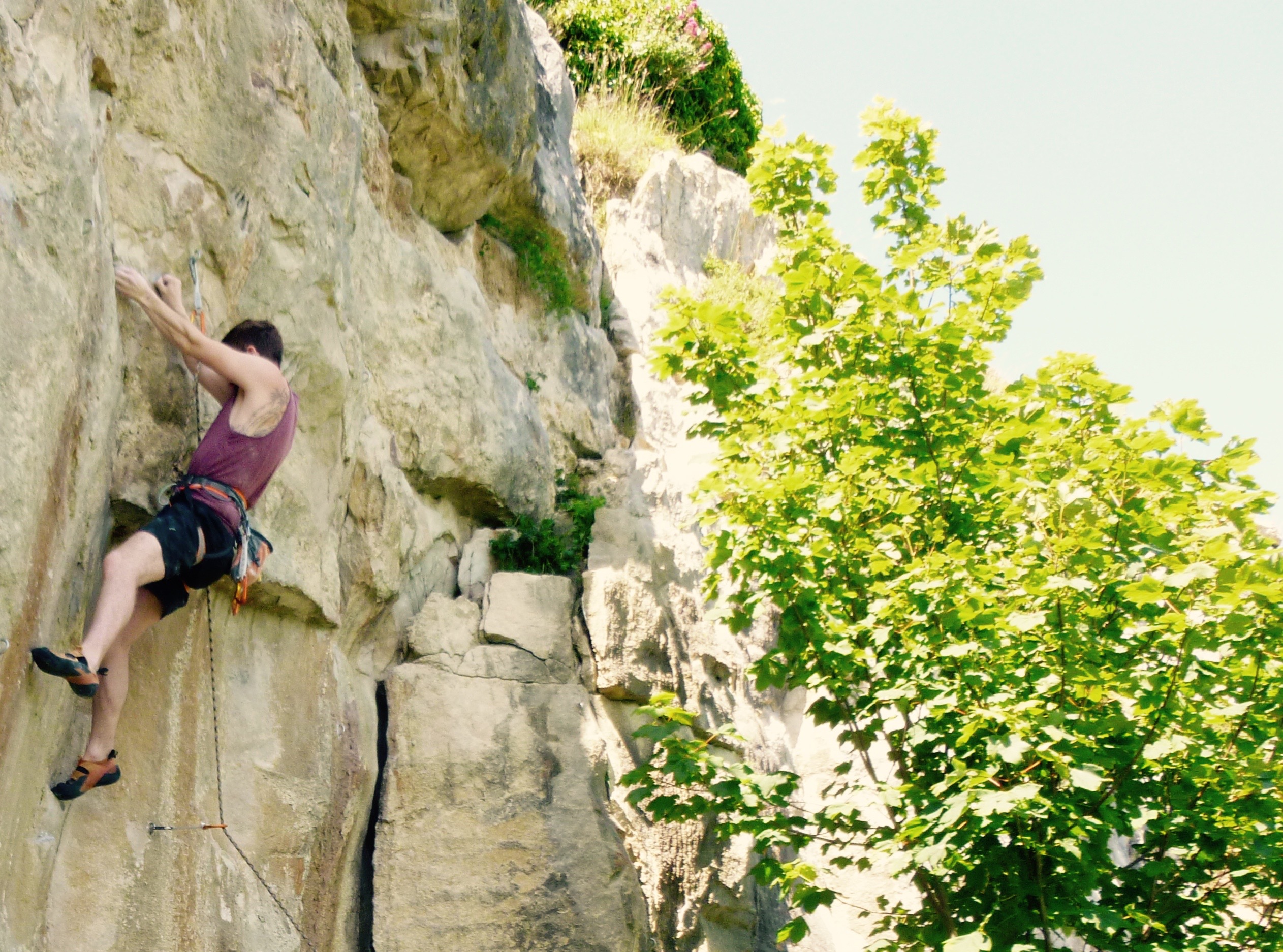One year as a Sport Climber
For the past year I have been mainly sport climbing in the process of making this shift I have started to notice I have started to get over the plateau I was in.
I thought I would try and sum up some of the things that have made a difference.
Diet and weight
I have always eaten what I wanted apart from the once or twice when I haven't eaten meat or drunk for a month. This has never been a problem as I naturally eat an OK diet rarely eating fast food or packet meals but at the same time I rarely eat fish and most of my meals were beef/chicken with spinach!
To try and improve this I have trying to introduce things like smoke salmon and go to an actual greengrocers to buy something other then spinach. This has been made easier since I moved in with my girlfriend who wasn't a fan of the steak and spinach diet!
Trying to eat healthy every week is hard so as a good starter just trying to eat well the week before you go away this is also pretty well researched. At the same time not drinking and getting a good weeks worth of sleep massively helps with fatigue.
This year I have also changed what would be in my crag lunchbox, switching the Jamaca cake and bagels for lighter snacks like rice cakes and crackers so I can eat more regularly. This means you can climb all day without a big rest in the middle of the day to eat and digest the big meal you ate. One of my favourites is a Ryvita and some peanut butter between routes.
I actually haven't mentioned weight but if you do all of this you shouldn't need to bother dieting!
A funny video from Siurana to break up my ramblings.
Yoga and Flexibility
My hamstrings have been the cause of over 50% of my injury in climbing and running. My hamstrings are incredibly tight because for years I didn't properly warm down after exercise this and to top it off I cycle to work and then sit at a desk for around 8 hours a day.
Trying to solve this is hard because the gains are ridiculously gradual and I doubt I will be touching my toes any time soon. My current strategy is trying to do yoga every morning in reality this equates to 4/5 days a week, after climbing I try to spend at least 10 minutes warming down. At work I have been trialling using a standing desk which works well with the Promadoro Method of working 25 minutes at a time and then sitting down during you're break.
This is the sequence I try and follow every morning.
The Right Conditions
Realising that trying to climb my hardest in full sunshine was a bad idea took me a surprising amount of time considering how much time I spent chasing the best conditions when I bouldered most of the time. Planning where to climb first based on which side of the crag gets the sun first is so important as it means you probably won't need to chalk as much and the holds will probably be alot less sweaty.
Conditions come second to the head game which I have suffered massively with, the conditions could be perfect but if you're climbing clip to clip, constantly thinking about making it to safety at the next clip then there is no way you are going to be ticking anything at you're actual limit! Instead you should be breaking the route up based on the boulder problems or sections that make up the routes and not the protection. I find that if you are tired or have other things on you're mind the game is pretty much over and you start to focus on making it to that next clip. Another thing that can ruin your headgame is not trusting your belayer.
Training
After my first few sport climbing trip it quickly became apparent that strength wasn't a problem it was inability to recover and my endurance through long easier sequences. Around this time I started reading The Climbers Training Manual which was a great introduction to ensuring you are training each of the different attributes of climbing (base fitness, strength, power and power endurance). This book got me into structured training as well as writing notes about how the session or trip, went this retrospection helps you take some time to think what worked well and also why you had a bad session e.g. you skipped lunch.
The training manual also recommends grade triangles which I have seen in a few other articles, I think using this as a boardgame type thing where if you haven't climbed a 7A+ sieging a 7B+ for months is a waste of time as you will learn a lot by climbing each of those routes.
7C
7B/+ 7B/+
7A+ 7A+ 7A+
7A 7A 7A 7A 7A 7A
My current triangle looks like this bofore I made it I spent quite a lot of time working 7B+'s which were at my limit and this meant I was not getting any short term gratification or improving my technique for resting for example.

Working Leer of Beethoven - 7B+
Hopefully some of these notes help someone improve their climbing!
Alex
